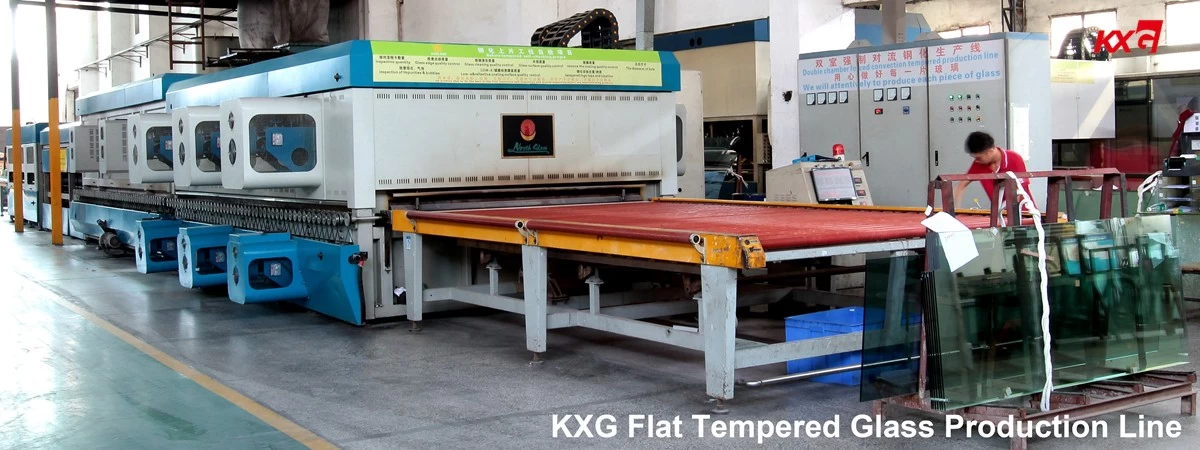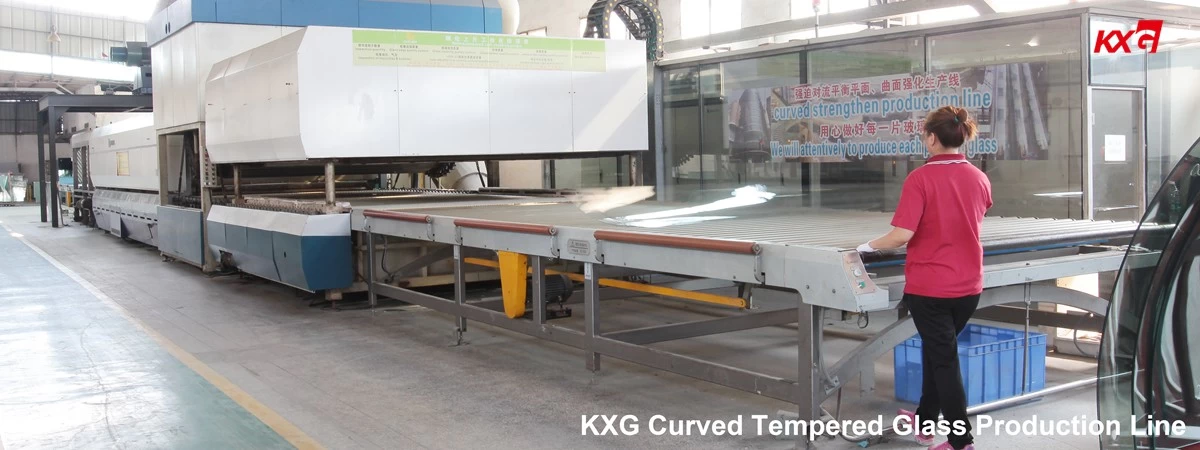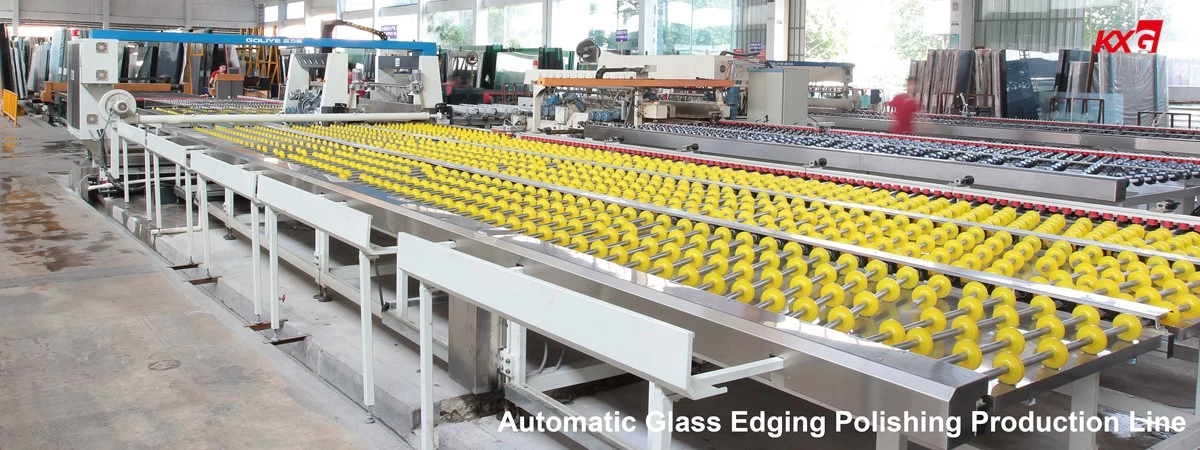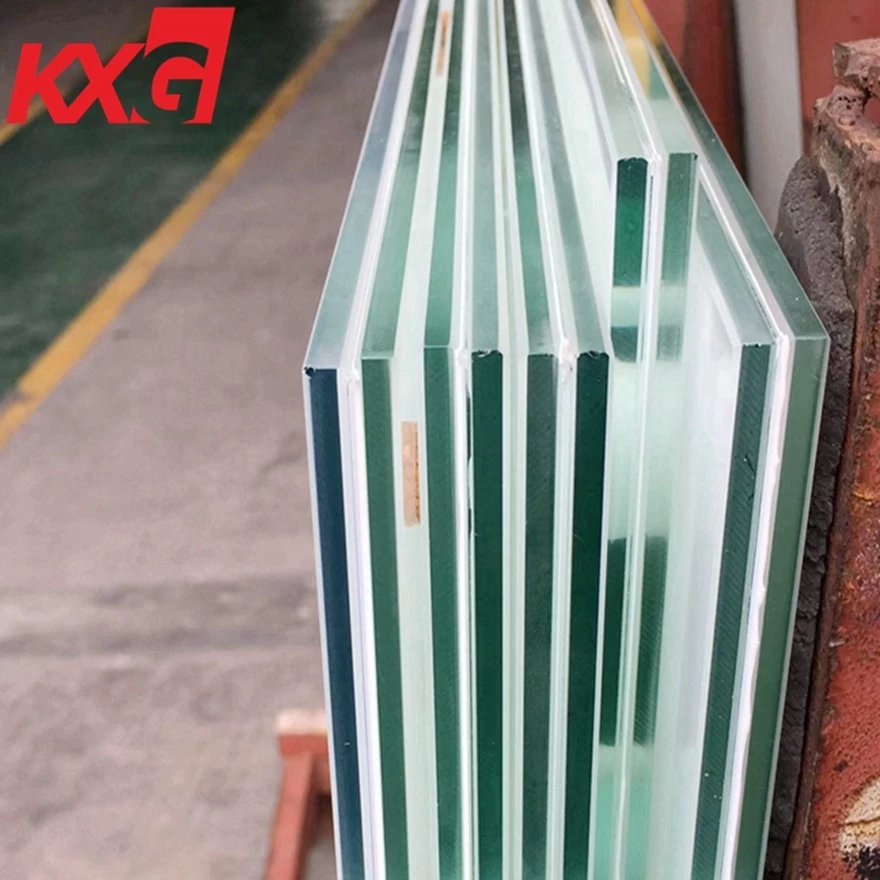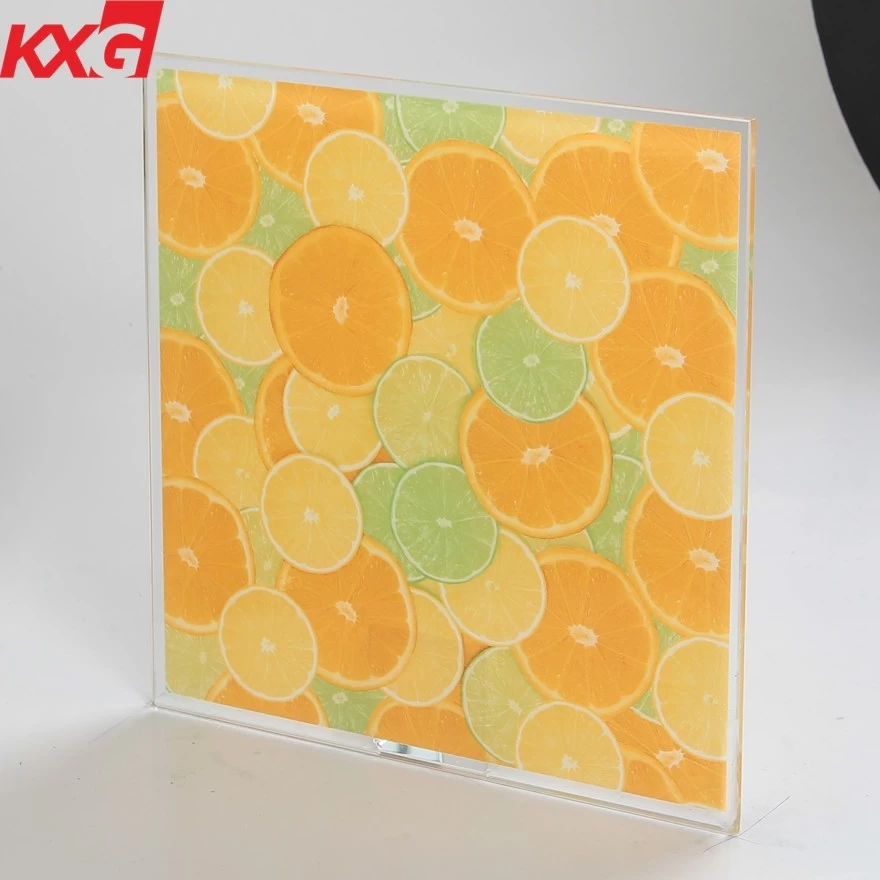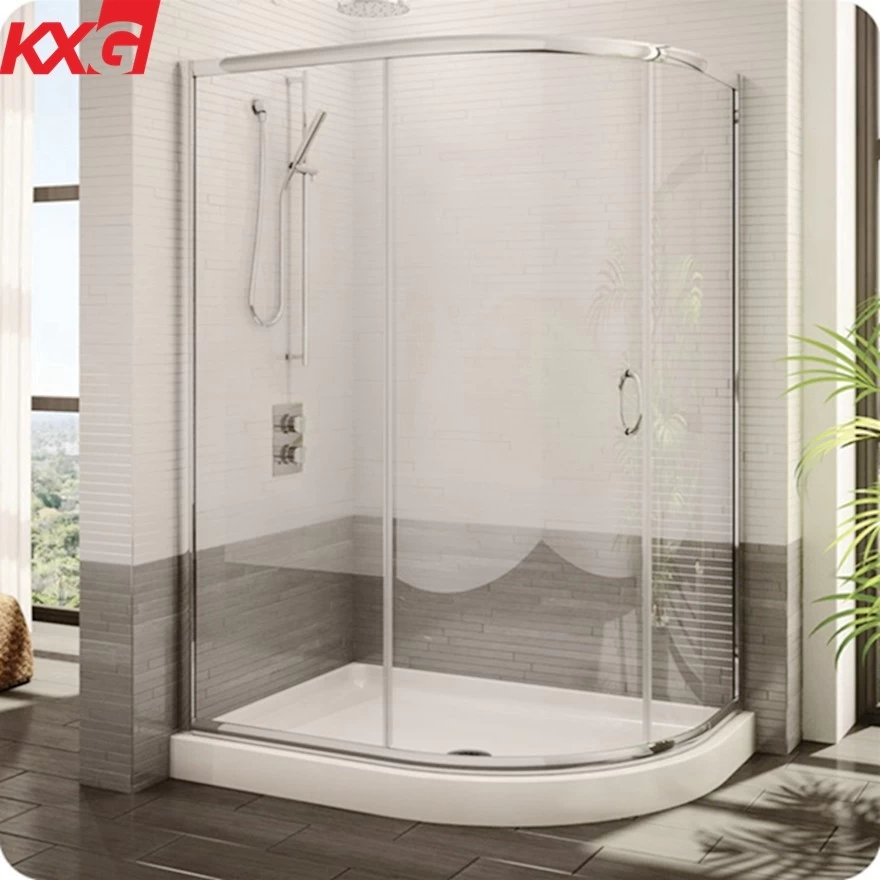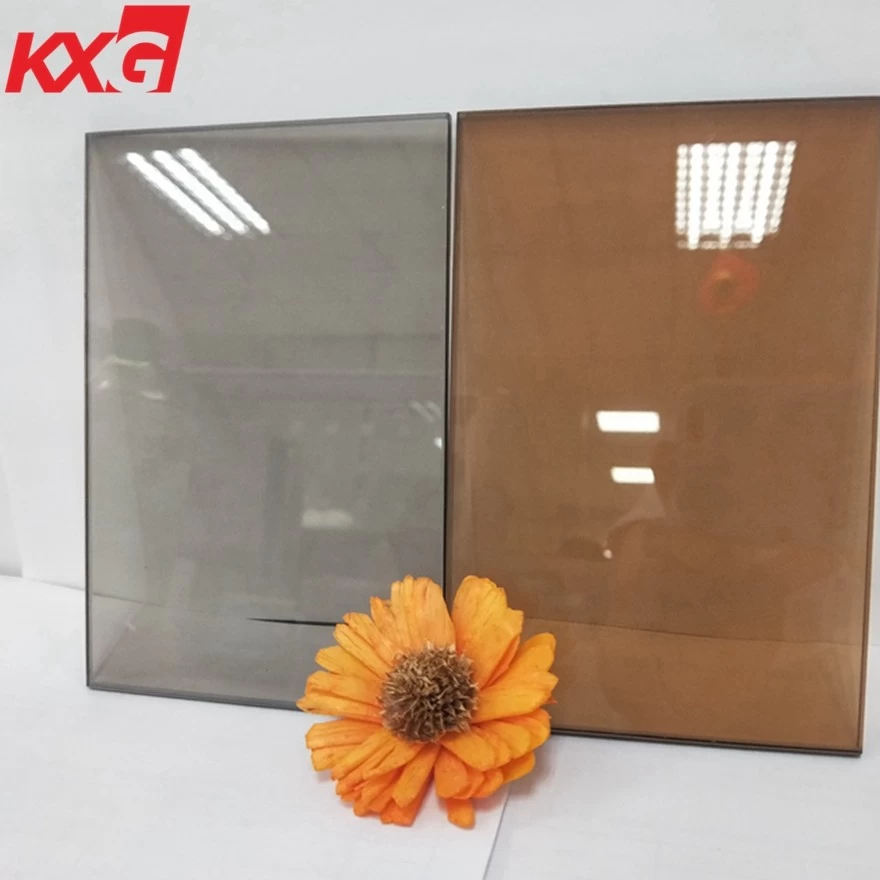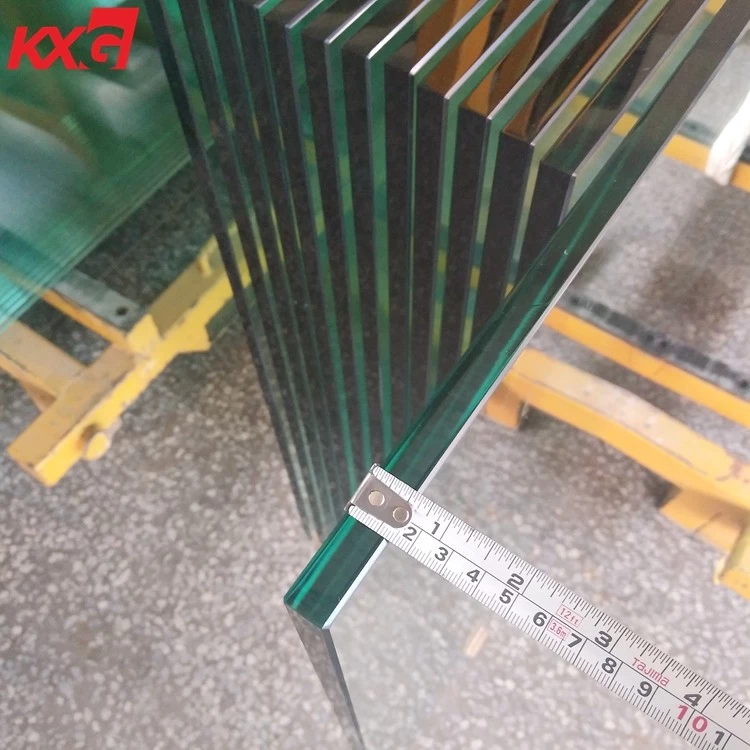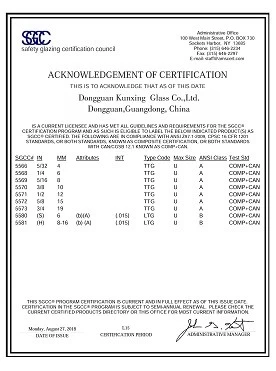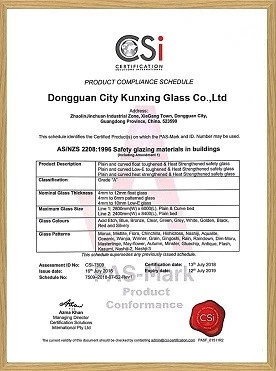Where does the color of colored glass come from?
DONGGUAN KUNXING GLASS CO LTD
Internet
2019-07-24 16:53:25
The color of the glass depends not only on the colorant added, but also on the smelting temperature and the nature of the flame to adjust the valence of the elements to give the glass a different color. For example, copper in glass, if the presence of high-priced copper oxide, the glass appears blue-green; in the presence of low-cost cuprous oxide (Cu2O), the glass is red. Sometimes, the firing does not make the glass look good, and the second heating is required to make the glass appear color. This is the case with the precious gold-red glass, which is made by adding a small amount of gold to ordinary glass ingredients.
In addition to the colorless and transparent glass that we often see in our daily life, there are many colored glass and black glass. For example, the window glass of a car is purple-black, with blue architectural glass. At traffic intersections, traffic lights should be made of red, yellow and green glass. The festival celebrates the night with lights, and now people use colored light bulbs to decorate the festival. Take an art photo and put a certain color filter lens on the camera lens, which has different shades of yellow, red, blue, green and other colors. Drivers, field workers, steel workers, and electric welders must carry different colors of protective eyepieces, and a touching drama. If there is no light and light, the performance will be inferior. In the strong ballroom of the music, if there is no color tone of the laser, the dynamic atmosphere of the music will be weakened.
After research, it has been found that if 0.4 to 0.7% of a colorant is added to the ingredients of ordinary glass, the glass can be colored. Most of the colorants are oxides of metals. We have already seen that each metal element has its own unique "spectral characteristics", so different metal oxides can exhibit different colors. If these oxides are added to the glass batch, the glass is colored. For example, adding chromium oxide (Cr2O3), the glass is green; adding manganese dioxide (MnO2), the glass is purple; adding cobalt oxide (Co2O3), the glass is blue, and the protective eyepieces used by steel workers and welders use this Made of glass.

In fact, the color of the glass depends not only on the colorant added, but also on the smelting temperature and the nature of the flame to adjust the valence of the element, giving the glass a different color. For example, copper in glass, if the presence of high-priced copper oxide, the glass appears blue-green; in the presence of low-cost cuprous oxide (Cu2O), the glass is red. Sometimes, the firing does not make the glass look good, and the second heating is required to make the glass appear color. This is the case with the precious gold-red glass, which is made by adding a small amount of gold to ordinary glass ingredients. After the first melting, gold is distributed in the atomic form in the glass.
Nowadays, various high-grade color glasses have been made using oxides of rare earth elements as colorants. Color glass with rare earth elements, bright color, bright color, and even change color under different light. For example, in yttrium oxide glass, it has such a characteristic that it is purplish red under sunlight and blue-violet under fluorescence, which is very beautiful. There is a kind of glass that changes color with the intensity of light. People use it as the lens of the glasses and the window glass of the house. Using this glass as a window glass, the room can maintain a certain brightness, and no need to use curtains to shade, so some people call it "automatic curtains." It can also block the passage of ultraviolet light in the sun. After the glass is installed in the library and museum, it can protect books and cultural objects from ultraviolet rays.
In addition to rare earth elements, tungsten and platinum may be directly added to the glass to form a color-changing glass.
In addition to the colorless and transparent glass that we often see in our daily life, there are many colored glass and black glass. For example, the window glass of a car is purple-black, with blue architectural glass. At traffic intersections, traffic lights should be made of red, yellow and green glass. The festival celebrates the night with lights, and now people use colored light bulbs to decorate the festival. Take an art photo and put a certain color filter lens on the camera lens, which has different shades of yellow, red, blue, green and other colors. Drivers, field workers, steel workers, and electric welders must carry different colors of protective eyepieces, and a touching drama. If there is no light and light, the performance will be inferior. In the strong ballroom of the music, if there is no color tone of the laser, the dynamic atmosphere of the music will be weakened.
After research, it has been found that if 0.4 to 0.7% of a colorant is added to the ingredients of ordinary glass, the glass can be colored. Most of the colorants are oxides of metals. We have already seen that each metal element has its own unique "spectral characteristics", so different metal oxides can exhibit different colors. If these oxides are added to the glass batch, the glass is colored. For example, adding chromium oxide (Cr2O3), the glass is green; adding manganese dioxide (MnO2), the glass is purple; adding cobalt oxide (Co2O3), the glass is blue, and the protective eyepieces used by steel workers and welders use this Made of glass.

In fact, the color of the glass depends not only on the colorant added, but also on the smelting temperature and the nature of the flame to adjust the valence of the element, giving the glass a different color. For example, copper in glass, if the presence of high-priced copper oxide, the glass appears blue-green; in the presence of low-cost cuprous oxide (Cu2O), the glass is red. Sometimes, the firing does not make the glass look good, and the second heating is required to make the glass appear color. This is the case with the precious gold-red glass, which is made by adding a small amount of gold to ordinary glass ingredients. After the first melting, gold is distributed in the atomic form in the glass.
Nowadays, various high-grade color glasses have been made using oxides of rare earth elements as colorants. Color glass with rare earth elements, bright color, bright color, and even change color under different light. For example, in yttrium oxide glass, it has such a characteristic that it is purplish red under sunlight and blue-violet under fluorescence, which is very beautiful. There is a kind of glass that changes color with the intensity of light. People use it as the lens of the glasses and the window glass of the house. Using this glass as a window glass, the room can maintain a certain brightness, and no need to use curtains to shade, so some people call it "automatic curtains." It can also block the passage of ultraviolet light in the sun. After the glass is installed in the library and museum, it can protect books and cultural objects from ultraviolet rays.
In addition to rare earth elements, tungsten and platinum may be directly added to the glass to form a color-changing glass.



